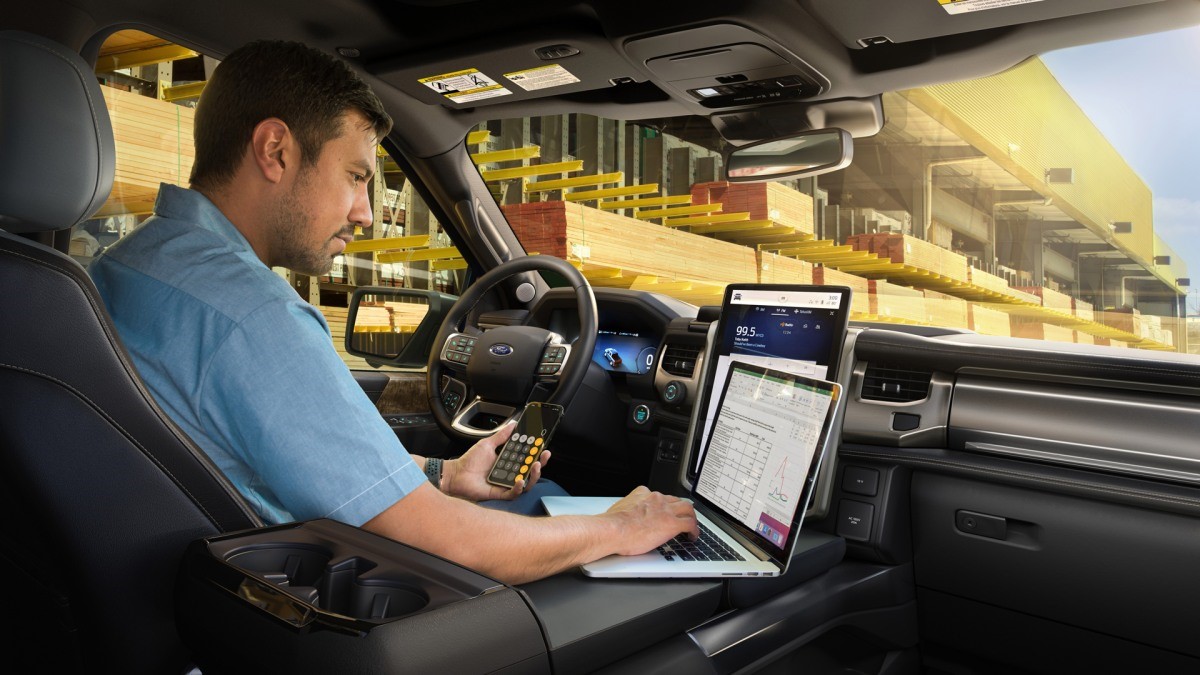Cisco is betting your car will soon become an extension of your home office
The way Jeetu Patel sees it, working from your car may soon be as ordinary as signing on to Google Docs from your home office.
“I think the future of work is largely going to be hybrid, where people will work in a kind of mixed mode—sometimes they’re in the office, sometimes they’re going to be at home, sometimes somewhere in the middle,” says Patel, executive vice president and general manager of security and collaboration at Cisco. “And that somewhere in the middle often tends to be automobiles.”
Patel should know: His company has quietly been at the forefront of building secure, reliable networking technology into cars, providing connectivity in close to 100 million vehicles through its Cisco IoT Control Center technology. According to Cisco executive vice president Jonathan Davidson, the networking giant is among the biggest players in the connected car business. “If you’re in a car, and you’re streaming audio through the native experiences of the car, more than likely you’re coming through Cisco infrastructure,” he says.

It’s no secret that cars have become as digitally connected as laptops or cellphones. Dashboard screens increasingly rival tablets in application versatility, and compatibility with Android Auto or Apple CarPlay is a must-have for many new car shoppers.
This level of connectivity is handy for navigation, streaming podcasts, and even singing in-car karaoke, but it’s also making cars increasingly useful as a place for work, including office work that until recently would have been difficult or impossible to do from a vehicle. And while dialing into a call from a traffic jam or updating a spreadsheet from a parking lot is probably still nobody’s ideal work situation, it’s likely to be increasingly common out of a mixture of necessity and convenience in an era of remote and hybrid work, where harnessing the car as a mobile office and phone booth can boost both productivity and flexibility.
Cisco has increasingly worked with carmakers looking to build work technology into their vehicles. Perhaps most prominent is Ford’s F-150 Lightning electric truck, designed to empower a variety of types of work with electric outlets powerful enough to drive professional-grade tools, a fold-out work table, and Cisco’s Webex conferencing software integrated into the dashboard screen.

“The point is that I can take it to a worksite, and I might need to talk to the foreman or I might need to talk to the architect,” says Davidson. “I can have that meeting in a really collaborative, visual way, without having to leave the worksite and travel somewhere, and I think that is extremely powerful.”
And when users are actively traveling, Webex can often seamlessly transition calls from an office device to a mobile phone and then to a connected car, using AI to filter out the distracting noises that are the bane of anyone who’s ever pulled off the highway to take a work call.
Unsurprisingly, some safety advocates have expressed concern about drivers using video technology while they’re behind the wheel. Automotive News reported last year that safety groups like AAA and the Governors Highway Safety Association expressed reservations about putting videocentric technology, including conferencing apps, in cars, and some states have begun to pass laws explicitly banning video chat while driving. In 2021, an Ohio state senator faced criticism for using Zoom, with video on, while driving—during a time when the state legislature was considering a bill to crack down on device-distracted driving.
In the case of Webex, when users start driving, the system stops showing video, helping to eliminate that oft-frightening experience of seeing a driver videoconferencing with a dash-mounted cellphone.
“If you’re driving the car, Webex is smart enough not to show a video to distract the driver,” says Patel. “If you stop the car, it’s smart enough to actually turn on the video so that you can actually use it in a parking lot.”
The experience isn’t limited to Ford drivers—Cisco has also announced partnerships with other carmakers including Audi and Mercedes-Benz to offer Webex in their vehicles, and the software also works with Apple CarPlay and Android Auto. Other conferencing platforms, including Zoom and Microsoft Teams, have also recently announced compatibility with Android Auto, and it seems inevitable that the number of in-car app options for work, as well as play, will continue to grow.
“As personal apps have expanded to smart watches, I fully expect apps to evolve and find themselves in vehicle infotainment systems,” says Mark Moffet, who leads work on the Ford Pro Intelligence in-car business software platform, in an email to Fast Company.
And with a number of major carmakers unveiling concept cars optimized for remote office work in recent years—a 2021 Nissan concept even featured a pop-out cubicle complete with Herman Miller chair—working from a parking spot could become more than just a last resort.
(23)



